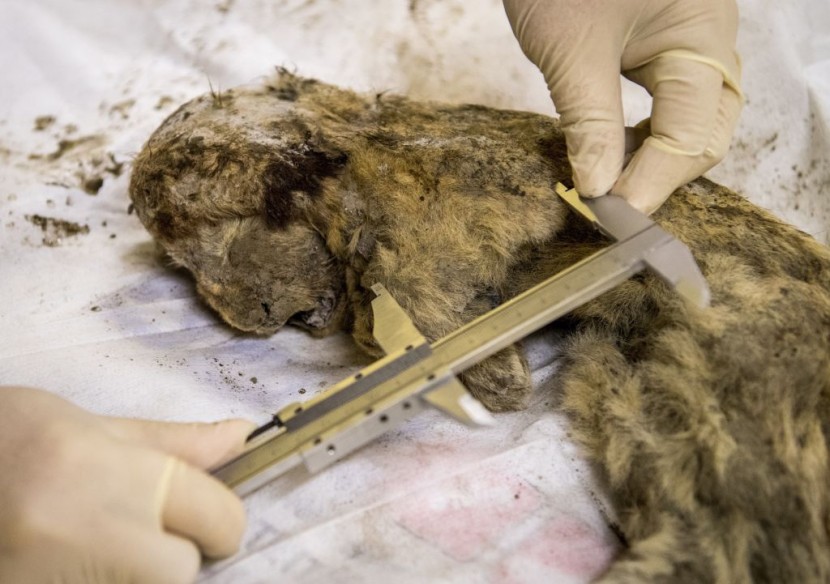
The discovery of a frozen ancient cave lion cub that is intact as the day it died several millennia ago caused a stir in the scientific community. Remains of the archaic predator in the freezing Siberian Arctic keep it intact as if it just slept a while ago.
It is rare to discover any intact remains of ancient animals. Mammoths have been found flash frozen but finding a feline undamaged offers opportunities to examine another genus from 28,000 years ago.
Preservation of the specimen is perfect in that it looks like it would awaken from its long slumber in the Ice Age.
Perfectly preserved creature from the icy past
The ancient lion cub has gold-colored fur that is still intact even after centuries of mud. Its teeth, skin, tissue, and organs have been freeze-dried for thousands of years to mummified perfection, reported CNN.
Amazingly, the permafrost preserved it for about 28,000 years after it rested and never woke up, and claws were still sharp that they could accidentally prick the skin. For the scientists, this specimen flash-frozen in an archaic freeze was kept intact.
Perfectly preserved cave lion cub found frozen in Siberia is 28,000 years old. Even its whiskers are intact.https://t.co/McEVLvu38E
— WSVN 7 News (@wsvn) August 6, 2021
Called the Siberian Simba, the cub was named Sparta. It is one of two cubs discovered related to cave lions that were huge and ferocious that used to roam in the Northern hemisphere.
This precious find was uncovered by mammoth tusk hunters in 2017 or 2018, located on the riverbanks of the Semyuelyakh, in Far East Russia, cited WTVA.
Other details of the discovery
At first, the scientists assumed that the two lion cubs were related. They were both found 49 feet apart, but a study had results they were 15,000 years apart in age. Boris, as the second one is called, was carbon-dated and found to be 43,448 years old. However, the state of frozen ancient cave lion cub Sparta offers more investigative opportunities than Boris.
Love Dalen, an evolutionary geneticist for the Palaeogenetics in Stockholm, Sweden, made a statement about Sparta. He said Sparta is one of the better-preserved ice age mammals, with most of the body intact except for ruffled fur. The whiskers on this cub were well preserved, too, compared to Boris.
The estimated age of the cubs is 1 or 2 months old when they died, said the study, but the cause of death is unknown. Scientists on the study are Russian and Japanese who concurred it might have been a natural death.
Researchers did scans on the cave lion cub, which reveals a damaged skull, ribs dislocated, and distortions on the skeleton.
Dalen remarked the cubs must have been quickly covered by mud, trapped in a mudslide, and may have fallen into permafrost gap. Cracks form due to seasonal thawing in the permafrost.
During Siberian Ice Age, frozen things were not all ice. There were mammoths, wolves, bears, and large mammals that went extinct, and the cave lion, which is bigger than its descendants in Africa today.
It is a mystery how these large carnivores lived in a harsh environment that was in constant flux.
Researchers posted the analysis of the study on Quaternary, and they concluded that cave lions then had similar coats to modern lions, but with some differences. They had long and thick undercoat fur that helped to keep them warm during the Ice Age.
Also, the climate is a factor that has made the arctic permafrost intact and paved the way to more discoveries as well.
Finding a frozen ancient cave lion cub in perfect preservation gives a window to the old Ice Age when great cats were more those who roamed with mammoths.
Related Article: National Geographic Cartographers Add the Southern Ocean of Antarctica on The World Map as The Fifth Ocean
© 2025 HNGN, All rights reserved. Do not reproduce without permission.








